logging
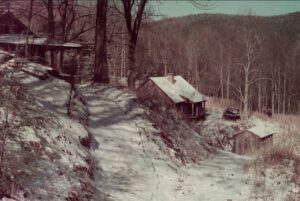
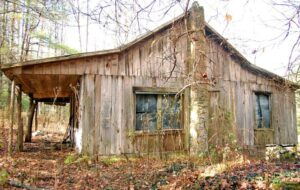 As America grew, towns popped up in many places, only to dwindle into ghost towns when the expected industry that motivated their beginning, fell through. Lost Cove was one such town. Established just before the Civil War, it was once a thriving agricultural community, but then in the early 20th century, logging replaced farming, and the railroad brought workers. Somehow in the shuffle of changes, Lost Cove found itself off the beaten path, almost hidden in the forest, with no electricity or running water. The little town had to figure out something new, and so, because of the remoteness and because the town lay on the North Carolina/Tennessee border, an equally thriving moonshine industry was born.
As America grew, towns popped up in many places, only to dwindle into ghost towns when the expected industry that motivated their beginning, fell through. Lost Cove was one such town. Established just before the Civil War, it was once a thriving agricultural community, but then in the early 20th century, logging replaced farming, and the railroad brought workers. Somehow in the shuffle of changes, Lost Cove found itself off the beaten path, almost hidden in the forest, with no electricity or running water. The little town had to figure out something new, and so, because of the remoteness and because the town lay on the North Carolina/Tennessee border, an equally thriving moonshine industry was born.
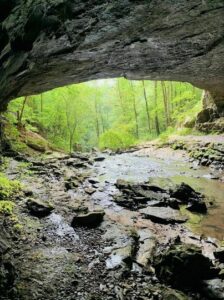
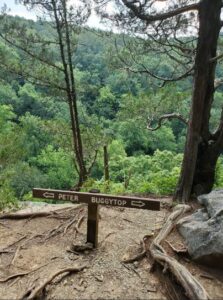
Many people might think that the moonshine industry was all due to prohibition, and that is largely true, but while bootlegging was a crime of opportunity, it was also quite likely to be a crime of necessity. Still, while moonshine could provide a living for the residents, it would never be able to sustain a whole ton for very long. Eventually, the residents of Lost Cove began to move away to laces where they could make a living. The town, now empty, seen fell into disrepair. These days Lost Cove is a graveyard of abandoned homes and crumbling gravestones. Because Lost Cove was on the border, either state could have agreed on jurisdiction to collect tax revenues, but both declined to, thereby creating a haven for bootlegging.
Even with the logging business doing well, the timber eventually thinned and the railroad service that brought passenger trains through the area stopped. With that, the Lost Cove residents became even more isolated. The nearest stores were eight miles away, and they would have to walk for basic supplies, mostly because they didn’t have money for any other form of transportation. Soon the infrastructure deteriorated too, and the rough 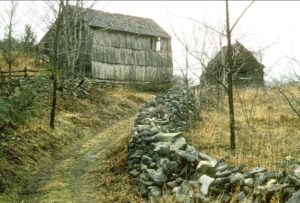
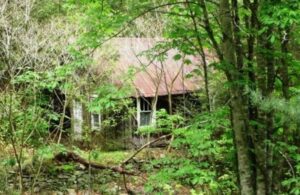 or non-existent roads led to even more shortages. In the end, here was nothing left, but to leave. The last known resident left in 1957. Sadly, in 2007, a fire destroyed most of what still stood in Lost Cove. All that is left now is a few structures, memories, and the history of the area, only seen by the occasional hiker, using trails that remain the only route of access.
or non-existent roads led to even more shortages. In the end, here was nothing left, but to leave. The last known resident left in 1957. Sadly, in 2007, a fire destroyed most of what still stood in Lost Cove. All that is left now is a few structures, memories, and the history of the area, only seen by the occasional hiker, using trails that remain the only route of access.
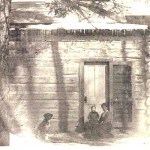 In years gone by, when it wasn’t as easy to get to your job site as it is today, many people lived as near their work as possible, especially when their work was out in the woods. Jobs in the cities and towns don’t require long drives, but when you travel on a horse, and work from sunrise to sunset; it’s nice to be close to home. Working in the logging industry, like my grandparents did, living in the woods was just part of the job.
In years gone by, when it wasn’t as easy to get to your job site as it is today, many people lived as near their work as possible, especially when their work was out in the woods. Jobs in the cities and towns don’t require long drives, but when you travel on a horse, and work from sunrise to sunset; it’s nice to be close to home. Working in the logging industry, like my grandparents did, living in the woods was just part of the job.
I’m told that their little cabin in the woods was near International Falls, Minnesota, where their daughter, my Aunt Laura was born. I would imagine that the winters were very cold there, and the best thing for anyone who could was to stay indoors, but them I seriously doubt that my grandmother was a woman who was afraid of a little but of cold and snow. Still, the cold and snow would really make it hard to work out in the woods…nevertheless, that was the job that had to be done. Maybe that was another good reason to live near your work. You could get home to the nice warm house sooner, and maybe 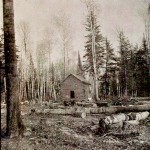 even be able to go home for lunch.
even be able to go home for lunch.
When I look at these pictures, it reminds me of the “Little House on the Prairie” books. Everywhere you look seems to be a new adventure. I can imagine how the Ingalls girls felt living there…the adventures they must have had…the adventures my Aunt Laura must have had there, playing with the children of the other logging families that lived in the woods too. I’m sure there was an abundance of forest animals to see and be in awe of. I love photographing the animals…when I happen to be in the right place at the right time. The pictures can be amazing. I can imagine all the beauty all around the little cabin in the woods.
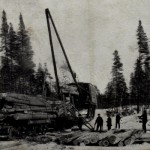 For a number of years some of my dad’s family worked in the lumber business like so many other people from the area near International Falls, Minnesota and northern Minnesota, North Dakota, and Wisconsin. Much of the lumber was then sent to the Sawmill and Paper mill in International Falls. The year was somewhere around 1912, and the equipment used was not like what is used in the lumber business of today. After the logs were dragged or “skidded” to the railroad, they were loaded on to the rail cars by a Yarder. A Yarder was a machine that traveled on railroads knows as “dummy lines” to the site where the logs were to be loaded. These machines appeared to be large and cumbersome, they were in reality, workhorses that could handle big jobs. Once the logs were hooked to the cables, the log could be skidded at a rate of 1000 feet per minute…making work around the machines, rather dangerous. Once the log was near the rail car, men and machines had to work together using cables and poles to load the logs onto the railroad car. Once again, this put the men in harm’s way. If a log slipped, it was very likely that it was going to hit someone, resulting in death or at the very least, serious injury.
For a number of years some of my dad’s family worked in the lumber business like so many other people from the area near International Falls, Minnesota and northern Minnesota, North Dakota, and Wisconsin. Much of the lumber was then sent to the Sawmill and Paper mill in International Falls. The year was somewhere around 1912, and the equipment used was not like what is used in the lumber business of today. After the logs were dragged or “skidded” to the railroad, they were loaded on to the rail cars by a Yarder. A Yarder was a machine that traveled on railroads knows as “dummy lines” to the site where the logs were to be loaded. These machines appeared to be large and cumbersome, they were in reality, workhorses that could handle big jobs. Once the logs were hooked to the cables, the log could be skidded at a rate of 1000 feet per minute…making work around the machines, rather dangerous. Once the log was near the rail car, men and machines had to work together using cables and poles to load the logs onto the railroad car. Once again, this put the men in harm’s way. If a log slipped, it was very likely that it was going to hit someone, resulting in death or at the very least, serious injury.
I’m not sure what my dad’s family member’s jobs were in that industry, but that would have been around the time they were working in that industry. Logging has always been a dangerous industry to be in anyway, due to the large trees falling. You can’t always predict exactly where they are going to fall, although they know more about that these days than they used to. Still, the thought of a log being pulled from one point to another at the rate of 1,000 feet a minute and having someone in the way of that…makes me cringe!!
When I was watching some of the old home movies from Bob’s family, I saw that some of them were in that same industry for a time. There was a stark difference in the way trees  were moved from place to place. The Harvester was able to go up into the area where the trees were being cut, and bring them down to the loader. The loader being on wheels, with a Diesel engine, was them able to lift the logs onto the trucks, without the need to “skid” them closer. No one needed to be around to work cables or anything else to get the logs on the truck. It made for a much safer situation for everyone concerned. Of course, every invention that we now had, came from a need seen by someone in the past, so I guess we have those loggers in the old days to thank for the safer conditions we now have. I’m just thankful that my ancestors lived through the time they spent in that industry.
were moved from place to place. The Harvester was able to go up into the area where the trees were being cut, and bring them down to the loader. The loader being on wheels, with a Diesel engine, was them able to lift the logs onto the trucks, without the need to “skid” them closer. No one needed to be around to work cables or anything else to get the logs on the truck. It made for a much safer situation for everyone concerned. Of course, every invention that we now had, came from a need seen by someone in the past, so I guess we have those loggers in the old days to thank for the safer conditions we now have. I’m just thankful that my ancestors lived through the time they spent in that industry.

